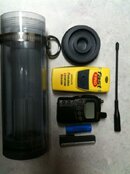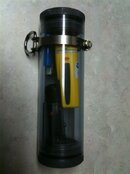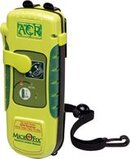I have a Spot Finder (SPOT SATELLITE MESSENGER :: HOME PAGE) - for shallower dives (100ft or so) the otterbox 8000 is the right size - deeper you would need watertight case rated for the depth - coverage is pretty good - unless you are in the southern part of Africa.
Jim
I have read on another thread that the SPOT has mixed reviews. For instance no coverage in Hawaii, yearly subscription fee. Guess this all just means someone should clearly understand and research before purchasing any unit.
John







